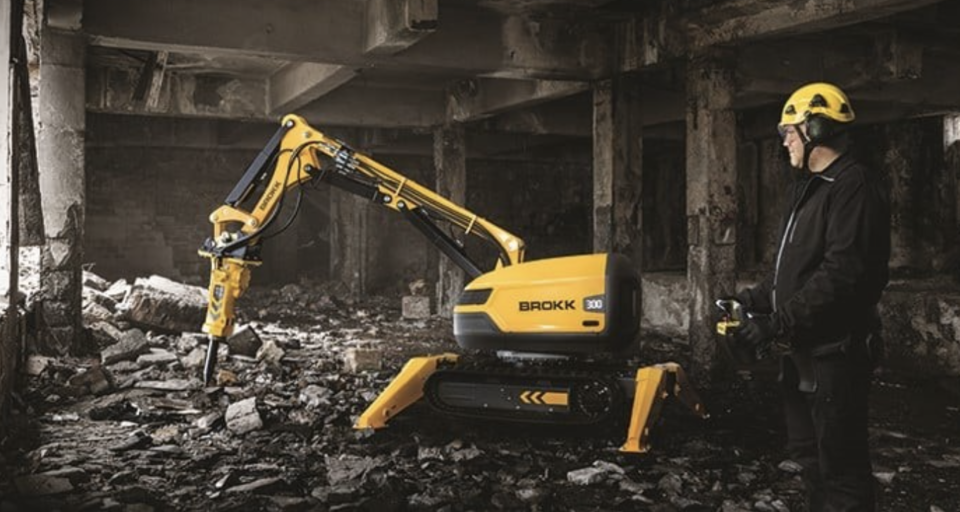Demolition is a tough job. The ground-shaking vibrations and dust-clogged air are fraught with peril. As the world grows, the demand for safe, efficient demolition remains unchanged. Technology has stepped up, providing new tools and techniques that revolutionize the demolition sector’s safety.
Robotic Solutions in the Construction Field
Demolition is, by nature, a manual and labor-intensive process, often bringing a host of safety concerns. But now, there’s a change in the air. An increasing number of firms are turning to robotic solutions, harnessing the precision and power of machines to minimize risk and maximize efficiency.
A noteworthy example? That’s robotic hammering. Utilized by companies such as Bluegrass, you can see their services at https://bluegrassbit.com/service/robotic-hammering/. This approach replaces traditional manual hammers with programmable robots that can work relentlessly and safely in environments that would be dangerous for humans.
Eyes in the Sky
Speaking of technological advancements, we can’t overlook the role of drones. Offering a birds-eye view of the demolition process, drones can provide valuable insights without putting workers at risk. By capturing real-time images and videos, drones make it possible to monitor structures for instability, plan safe demolition strategies, and even perform inspections post-demolition, all from a safe distance.
Augmented Reality
Augmented Reality (AR) is another game-changing technology. By overlaying virtual information onto real-world environments, AR allows project managers and workers to visualize potential hazards and formulate mitigation strategies. AR also aids in training, letting workers practice in a simulated environment before setting foot on the site.
The Internet of Things Provides New Safety Features
The Internet of Things (IoT) is making waves in various sectors, and demolition is no different. With sensors installed in equipment and wearable devices, IoT technology provides real-time information on everything from machinery health to worker vitals. It allows for proactive measures to be taken before a potential incident occurs, enhancing overall safety.
AI-Powered Predictive Analytics
Lastly, let’s remember the power of Artificial Intelligence (AI). With AI’s ability to process vast amounts of data quickly, predictive analytics has emerged as a valuable tool for identifying potential risks. It can highlight patterns and trends that might signify structural weaknesses or possible equipment failure, enabling preventive action to be taken.
Virtual Reality Support Demolition Education
As technology evolves, it’s not only the ‘doing’ of demolition seeing a facelift. The ‘learning’ side of things is transforming, too, thanks to the advent of Virtual Reality (VR). Taking training to new dimensions, VR offers a risk-free platform for novices to hone their skills before they bring them to the real-world field.
Check out these VR headsets on PCMag.com. They can help workers to navigate through a digitally replicated construction site, learn about potential hazards, handle equipment, and experience the noise and chaos typical of a demolition scene. The immersive nature of VR fosters a more engaging and effective learning environment, where mistakes don’t lead to real-world accidents but instead become opportunities for learning and improvement.
Through interactive modules and virtual walkthroughs, trainees can familiarise themselves with procedures and safety protocols in a pressure-free environment. The lessons learned in the virtual world can be directly applied to the real world, equipping workers with the knowledge and confidence needed to prioritize safety on the job site.
Machine Learning
A subfield of AI, Machine Learning (ML) uses algorithms to analyze data, learn from it, and make predictions or decisions without being explicitly programmed to do so. In the context of demolition, ML can analyze vast datasets collected from past projects, including the types of materials used in buildings, their age, previous construction methods, weather conditions, and even details about the local environment.
By applying ML, these algorithms can predict potential issues and hazards that may arise during the demolition process. This predictive capability is a game-changer, enabling project managers to anticipate and prevent accidents before they happen. It’s a proactive approach to safety powered by the precision and predictive prowess of machine learning.
Conclusion
Demolition might be one of the construction industry’s most challenging areas, but a safer future is being built with advanced technology. These advancements, from robotic hammering to AI-powered predictive analytics, pave the way for a new safety standard. It’s a brave new world, but with the right tools and an innovative mindset, the demolition sector is rising to the challenge. While nothing can eliminate the risks associated with demolition, technology is undoubtedly pivotal in reducing them, making the industry safer for everyone involved. A tough gig? Sure. But with tech on our side, it’s a gig getting safer every day.

